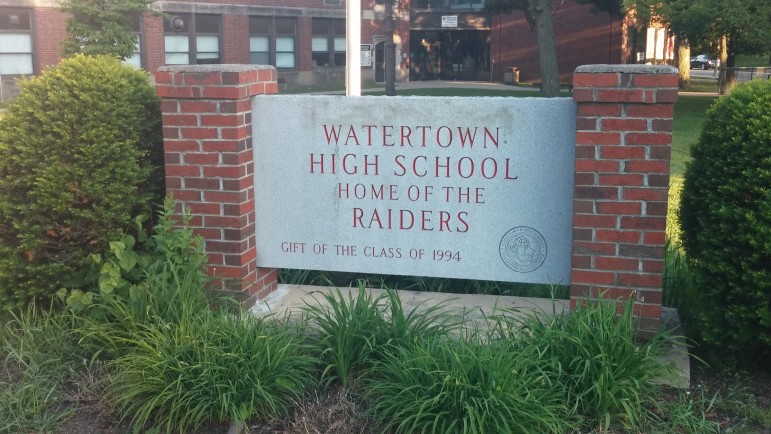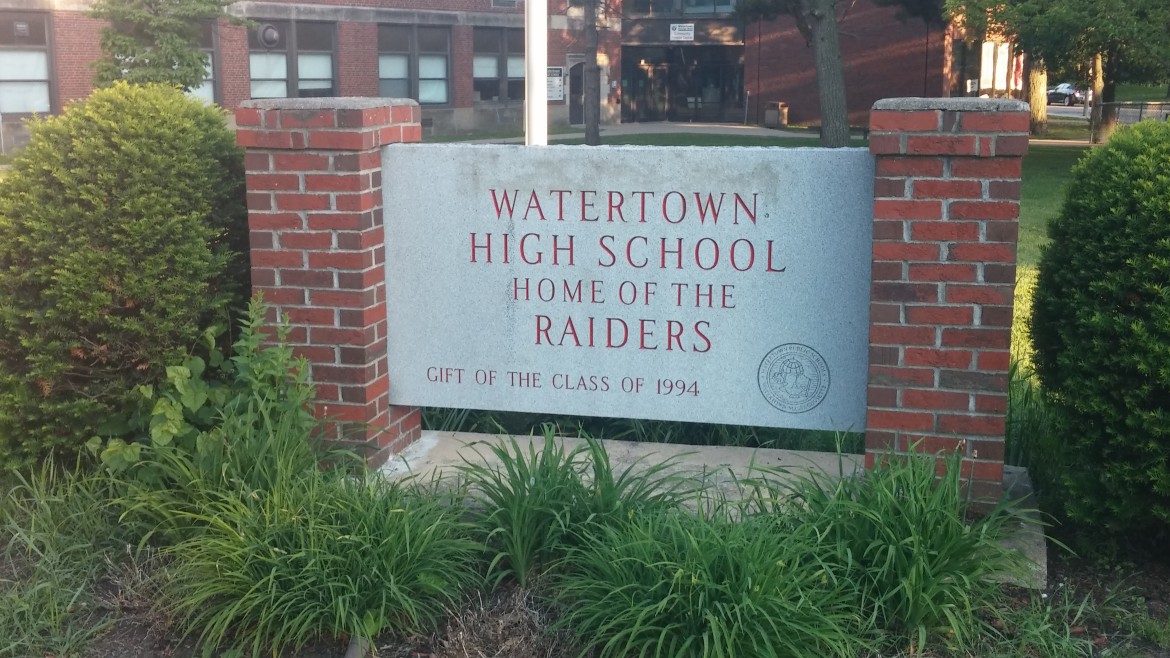
An inspection of Watertown High School discovered that the plaster on the walls contain asbestos, Superintendent Dede Galdston announced Monday, and the district has started determining the best way to deal with the hazardous material.
The inspection was conducted by a firm hired by the Watertown Public Schools as part of complying with the Asbestos Hazard Emergency Response Act (AHERA). Galdston sent a letter about the asbestos to Watertown High School parents, and read it at Monday’s School Committee meeting.
“During these inspections it was determined that the skim coat plaster at the high school contains some amount of asbestos,” Galdston said. “While previous reports did not identify asbestos in the plaster, more recent sampling and analytical methods have improved such that the levels of asbestos in plaster can now be detected.”
All the plaster in the school is being examined to determine the extent of the asbestos, Galdston told the School Committee.
“The health and safety of all faculty, staff, and students are of the utmost importance to me and the school department. Following the conclusion of the evaluation by our consultants, I will communicate to the Watertown High School community what our next steps will be to address this issue.”
Normally with skim coat plaster, the industry practice is to leave the asbestos in place and encapsulate it, but Galdston said School officials have not yet decided how to deal with it.
“Given the age of the building and the current condition of the plaster, the school department is in the process of determining the best course of action to ensure that plaster is maintained or encapsulated in a manner that prevents any future disturbance, damage, or deterioration,” Galdston said.
Asbestos becomes dangerous when it becomes airborne and is breathed in.
“We have conducted air quality tests in several of the rooms where plaster is in less than optimal condition, and all have come back well within the allowable ranges as determined by the U.S. Environmental Protection Agency (EPA) and the Massachusetts Department of Labor Standards (DLS),” Galdston said.
Meanwhile, faculty and staff have been asked to not to disturb the plaster, and if they have any concerns to contact the custodial staff or the administration.
The asbestos inspections were also conducted at Watertown’s other schools. No remediation will be required at Lowell and Hosmer elementary schools, Galdston said, and at Watertown Middle School and Cunniff Elementary School a small amount was found but they are in locations not likely to be disturbed, such as a crawl space or under floors.
Members of the School Committee thanked Galdston for the quick response and for alerting the community so quickly.
“Thank you for being proactive. I am confident we have as much information as we can,” said School Committee Vice Chairman Kendra Foley. “Safety is the most important thing.”
School Committee member Eileen Hsu-Balzer said that Watertown is not the only community which had asbestos in its schools.
“Neighboring communities also have the problem,” Hsu-Balzer said.
When the final determination of what should be done to remediate the problem, the School Committee may have a special meeting to discuss it and possibly approve funding, said School Committee Chairman John Portz.

Why did it take so long to detect this problem? Re-inspection is REQUIRED every 3 years in Massachusetts schools.
http://www.mass.gov/lwd/labor-standards/asbestos-safety/in-schools/1a-guidance-for-superintendents-general-ahera-requirements-jan-2014-accessible.pdf
Bruce –
I’m not sure if you received the email that the Super sent out, but in it she said:
While previous reports did not identify asbestos in the plaster, more recent
sampling and analytical methods have improved such that the levels of asbestos
in plaster can now be detected.
So maybe that’s WHY.